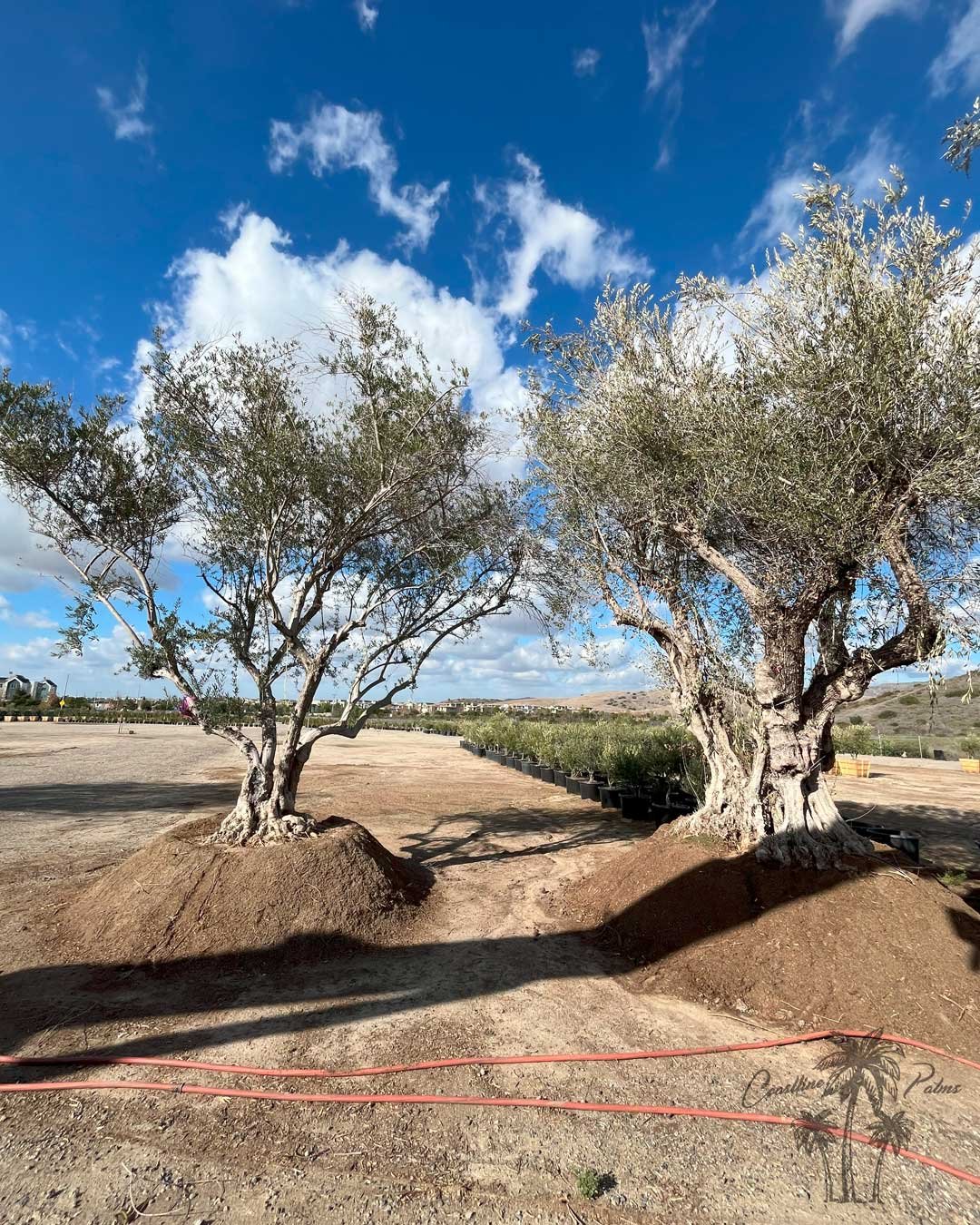Manzanilla Olive Tree
Bring a Touch of the Mediterranean Landscape to Your Home with the Manzanilla Olive Tree from Coastline Palms.
Imagine stepping into your garden and being greeted by the silvery shimmer of a majestic Manzanilla Olive Tree. This iconic tree isn’t just a stunning addition to your landscape, it’s also your gateway to delicious, homegrown olives with that signature nutty, slightly almond-like flavor.
• Why Choose the Manzanilla Olive Tree?
Timeless Beauty, Its elegant, gnarled trunk and delicate silvery-green leaves create an enchanting, old-world charm that enhances any outdoor space. Whether you’re aiming for a Mediterranean vibe or simply love a tree with character, the Manzanilla will not disappoint.
Delicious, High-Quality Olives Enjoy fresh olives straight from your own backyard! Whether brined for classic table olives or pressed for flavorful oil, your harvest will elevate your culinary creations.
Low Maintenance & Drought-Tolerant Designed by nature to thrive in warm, dry climates, this tree flourishes with minimal effort. Once established, it requires little watering and thrives in full sun, making it perfect for water-wise gardens.
Self-Fertile & High Yielding, Even if you plant just one, it will still produce fruit! But if you add a second variety like “Arbequina” or “Sevillano,” you’ll enjoy even more bountiful harvests.
A Legacy Tree, With a lifespan that can span centuries, your Manzanilla Olive Tree can become a living heirloom, growing more beautiful with each passing year.
• Where Can You Plant It?
The Manzanilla Olive Tree is incredibly versatile! It thrives in Mediterranean and warm climates (USDA zones 8-10) and can be used as a stunning focal point in gardens, courtyards, and patios. Whether planted in the ground or a decorative pot, it’s sure to draw admiration.
• Your Slice of the Mediterranean Awaits
Bring a taste of the Mediterranean lifestyle right to your doorstep. Imagine the satisfaction of picking your own olives, the joy of watching this tree mature, and the elegance it adds to your space. The Manzanilla Olive Tree isn’t just a plant—it’s an experience.
Don’t wait to buy! Our prices are the most affordable on the market, so you can enjoy the best deal on palm trees and olive trees any time. No need to wait for holidays or special sales. In fact, with us, it’s like our palm trees are always on sale!
Here are some Manzanilla Olive Tree details
The Manzanilla Olive Tree, scientifically known as “Olea europaea” ‘Manzanilla’, is a popular olive variety originating from Spain, specifically valued for its highly sought-after table olives. Manzanilla olives have a unique, slightly almond-like flavor and a firm texture, making them ideal for both table olives and oil production. This olive tree has also become popular in Mediterranean-style landscapes and warmer climates around the world.
Key Features
1. Size and Shape: The Manzanilla Olive Tree is a medium-sized tree, reaching up to 20-30 feet (6-9 meters) in height and about 15-25 feet (4.5-7.5 meters) in width. It has a graceful, spreading canopy with dense, narrow leaves that create a rounded, attractive form.
2. Trunk and Bark: The trunk has a gnarled, twisted appearance with age, with bark that is typically grayish-brown. The tree’s mature, rustic look adds to its aesthetic appeal, making it highly desirable in landscaping.
3. Leaves: The leaves are narrow and silvery-green, measuring about 1-3 inches (2.5-7.5 cm) in length. The silver undersides of the leaves give the tree a shimmering look in sunlight, which enhances its ornamental value.
4. Flowers: Manzanilla Olive Trees produce small, fragrant, creamy white flowers in spring. These blooms, while not especially showy, are significant because they are essential for fruiting.
5. Fruit: The Manzanilla olive is a medium-sized, green olive with a firm flesh, known for its subtle, nutty flavor. The fruit typically matures from green to a darker purple-black hue in late summer or early fall. These olives are commonly harvested while still green and brined to create the classic Manzanilla table olive.
6. Growing Requirements: Manzanilla Olive Trees thrive in Mediterranean-type climates, with hot, dry summers and mild, wet winters. They are drought-tolerant once established and are hardy in USDA zones 8-10. They need full sun and well-draining soil for optimal growth and fruit production.
7. Pollination: Manzanilla is a self-fertile variety, meaning it can produce fruit on its own. However, yields are typically higher with cross-pollination from other olive varieties, such as “Arbequina” or “Sevillano”.
8. Growth Rate: The tree has a moderate growth rate, reaching maturity within 8-10 years under ideal conditions. Pruning can help shape the tree and encourage a fuller canopy.
9. Maintenance: Pruning is generally required to maintain shape and health and to increase air circulation within the canopy. Additionally, some branches may need to be thinned after heavy fruiting to help the tree recover and prevent disease.
Landscape Use
The Manzanilla Olive Tree is an attractive choice for Mediterranean-style and xeriscape gardens, as well as for orchard use due to its high-quality fruit. Its rustic, gnarled trunk and silvery foliage provide a timeless aesthetic to landscapes, making it suitable for both formal and informal settings. Its drought tolerance and hardiness add to its appeal in water-conscious gardening.



















